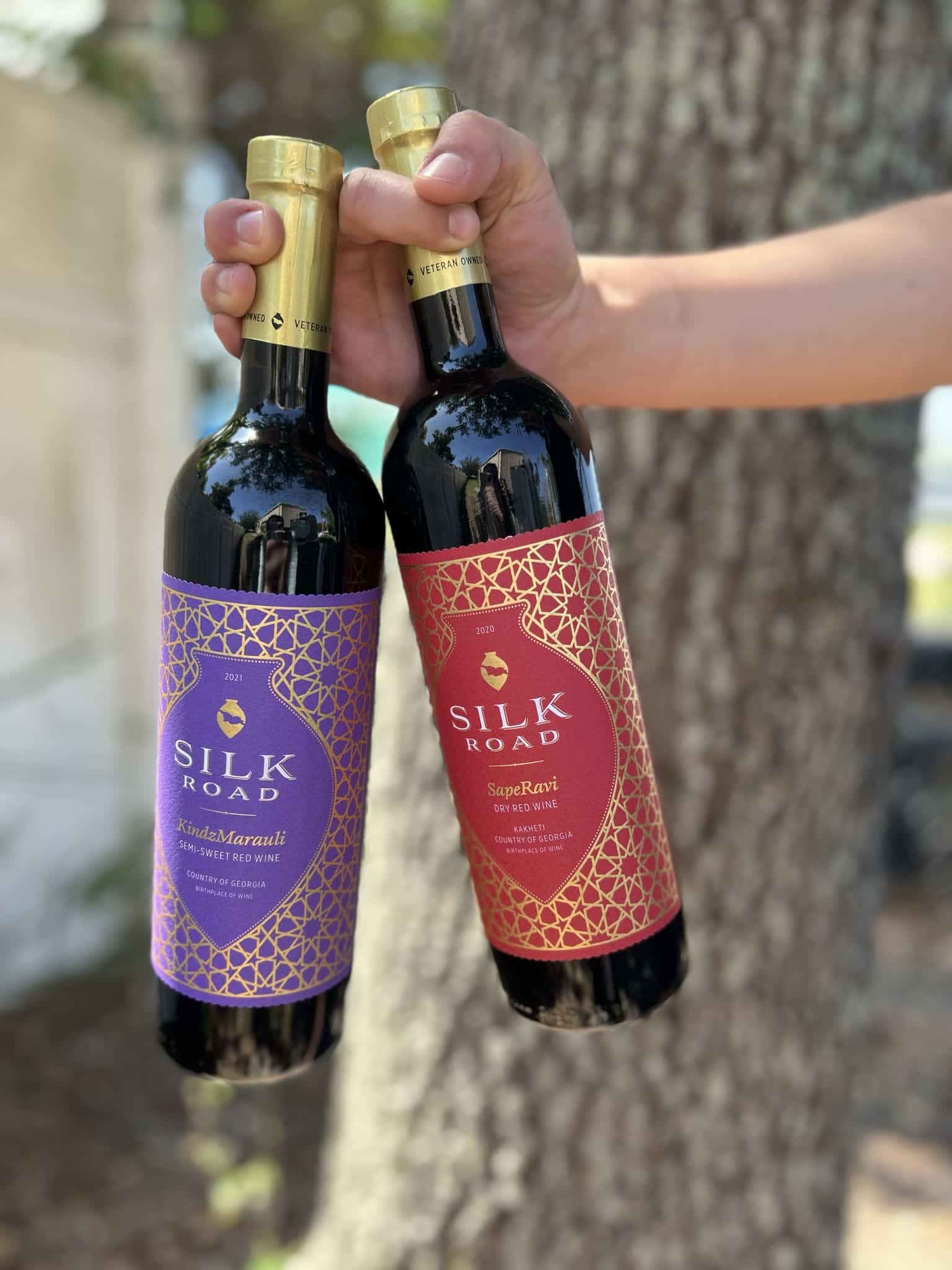Georgia is a land of contrasts. Situated at the crossroads of Europe and Asia, the country has over 8,000 years of winemaking history, earning it the title “cradle of winemaking.” While European wines dominate the global market, Georgian wines are attracting growing attention for their unique flavors, ancient winemaking techniques, and distinct cultural heritage. The country, with its numerous lush wine regions, rugged natural beauty, vibrant cuisine, and famed hospitality, is also becoming an increasingly popular wine tourism destination.
Georgian Wine Grapes and Varieties
There are more than 500 indigenous Georgian grapes, ranging from those known for producing bold red wines to crisp whites to sparkling varieties, prized for their balanced acidity and fresh fruit flavors. These varieties have evolved over millennia to thrive in the diverse terroirs of Georgia, which range from the plains of Kakheti to more mountainous regions. Some of the most notable include:
- Saperavi grapes, which means “dye” in Georgian, feature a deep red flesh, which lends itself to rich and robust wines, often with a higher alcohol content. While Saperavi wines are celebrated for characteristics such as their richness and depth, it’s a highly versatile grape that also lends itself to semi-sweet varieties.
Try it: This 2016 Saperavi Reserve ($45) features notes of cherry and black pepper with hints of vanilla with powerful tannin structure and deep finish.
- Rkatsiteli grapes are prized for their ability to produce crispy, dry whites, as well as more earthy and complex amber wines.
Try it: This 2017 Rkatsiteli Qvevri ($25.99) is a natural, skin-contact amber wine, containing notes of honey, apple, and apricot with a hint of spice.
- Kisi grapes are known for their aromatic complexity and dry, refreshing finish.
Try it: This 2020 Kisi ($18.99) presents an elegant bouquet of pineapple, grapefruit, and melon, with a well-balanced, harmonious aroma and a crisp, lingering finish.
Winemaking Techniques: Tradition vs Modernity
The main difference between Georgian and European wine styles lies in their production methods. Traditionally, Georgian wine is produced using qvevris, large, egg-shaped clay vessels — ranging from just a few liters to those capable of holding several thousand liters — where grapes are both fermented and stored. During this process, the qvevri is buried underground to maintain a consistent temperature, while the grapes — often including seeds, skins, and stems — ferment naturally without any additional additives. This technique is known for producing wines that are rich, earthy, and tannic. Additionally, once the wine is produced, the fermented skins and stems are repurposed, distilled down into a clear spirit called chacha, similar to Italian grappa.
European wine production, on the other hand, is more highly controlled and standardized, employing cultured yeast to initiate fermentation and sulfites and other preservatives to ensure stability. However, the biggest difference in European vs. Georgian wines is their preferred fermentation method; in most European countries, wine is fermented in temperature-controlled stainless steel tanks or wooden oak barrels, the latter of which can impart complex flavors to the wine.
Modern Georgian winemaking utilizes both traditional and European methods, producing a range of wines that combine ancient techniques with contemporary innovation, offering a variety of flavors and styles.
European Wine vs. Georgian Wine Culture
Winemaking in Georgia is deeply intertwined with the country’s culture and history. Wine is not simply viewed as a beverage, but a symbol of hospitality, tradition, and community, playing a large role in social and religious gatherings; most Georgian families produce their own wine. The country is famous for its supras, large feasts centered on not just food and wine, but family, friendship, and storytelling. They are led by a toastmaster, or tamada, who guides the evening through a series of toasts. In fact, wine is such an integral part of Georgian culture that the qvevri winemaking method was recognized by UNESCO as an Intangible Cultural Heritage of Humanity. While wine likewise plays an important role in European social life, its wine culture is more structured, with a stronger emphasis on regions, classifications, and professional expertise.
Try Georgian Wine Today
When you try Georgian wine, you also have the opportunity to experience the country’s heritage and culture, steeped in tradition and winemaking history. Silk Road, a veteran-owned wine importer, offers a curated and affordable selection of Georgia’s finest wine. Try a bottle today.



